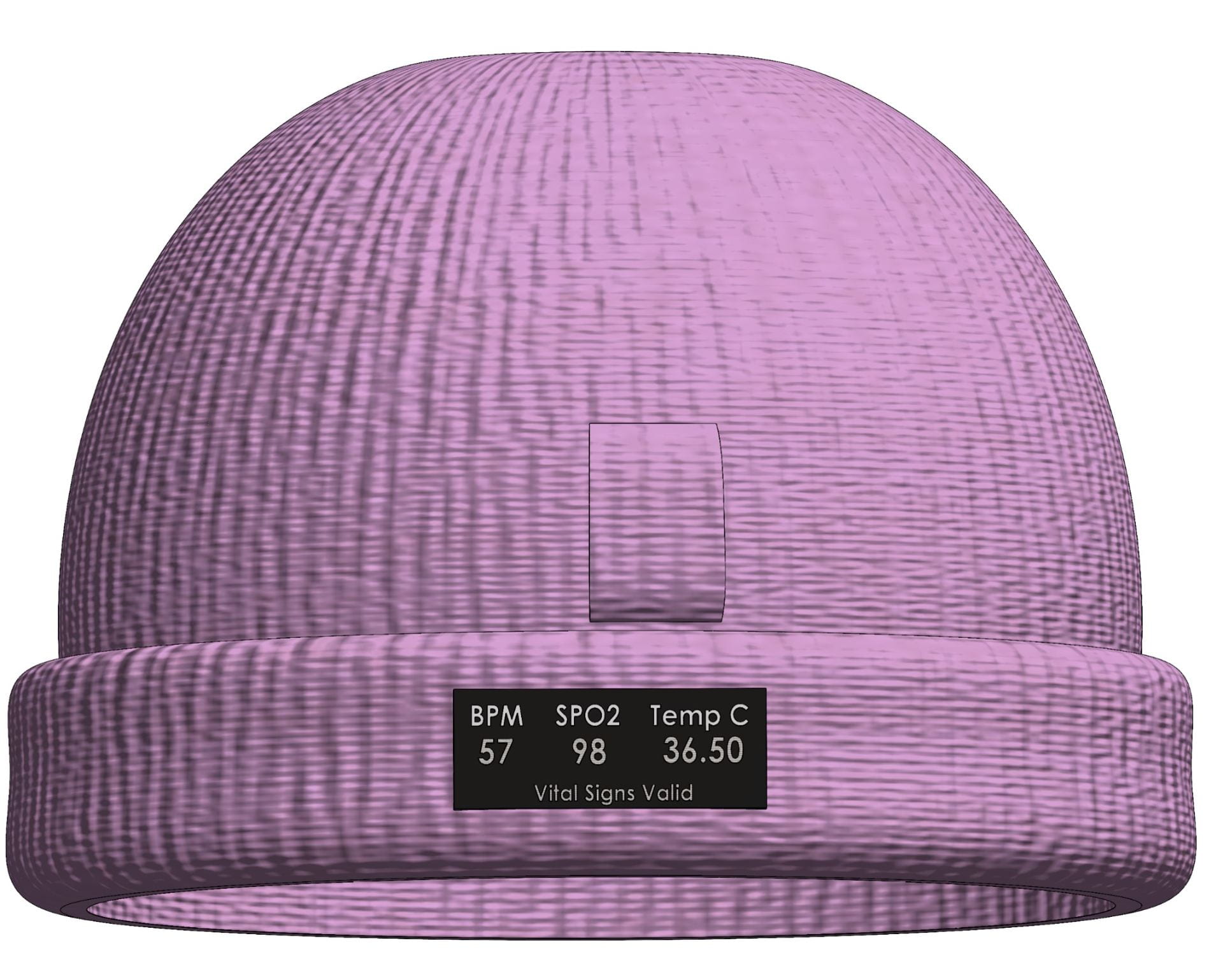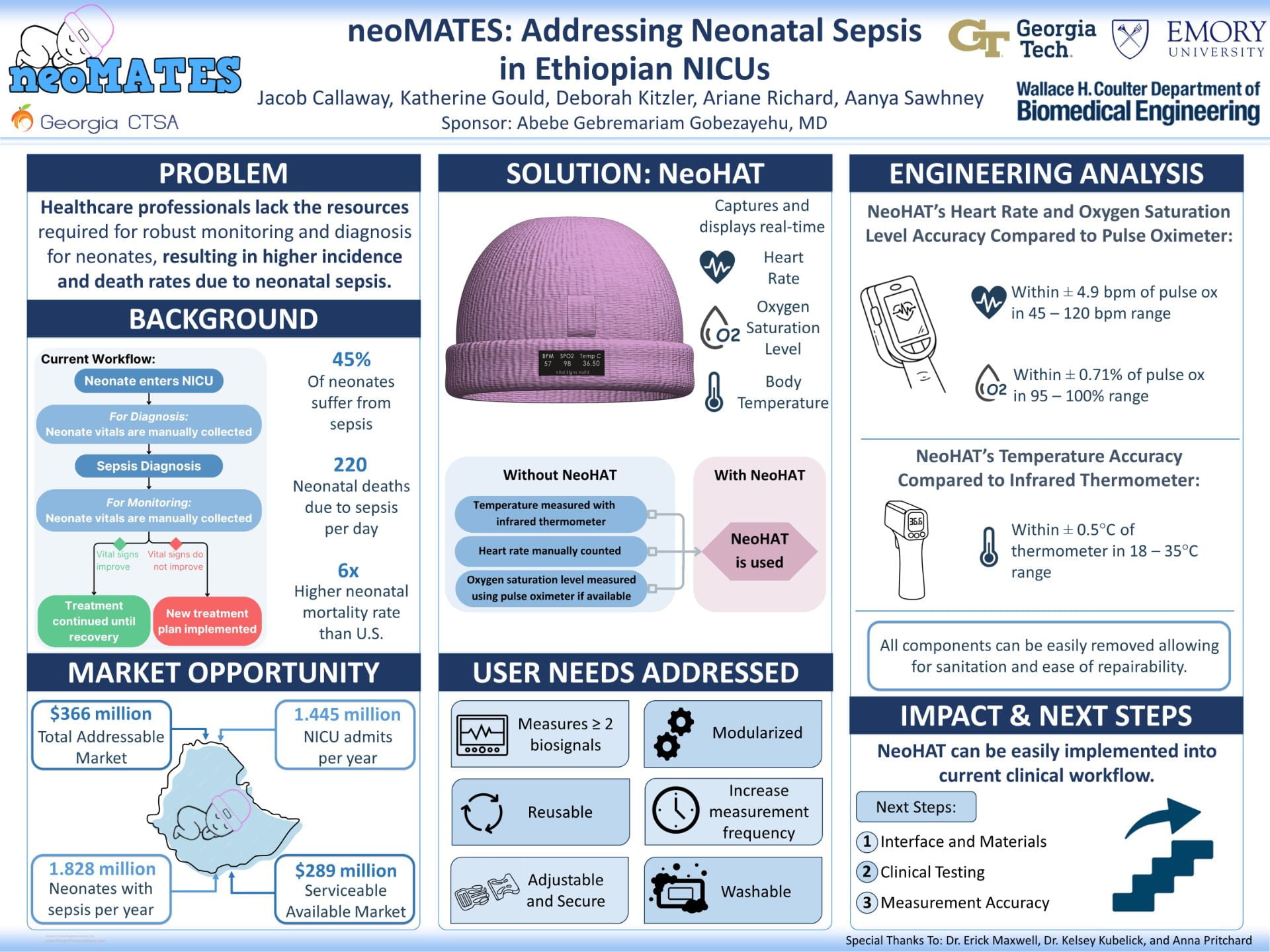Get to know our team on LinkedIN:
Jacob Callaway, Katherine Gould, Deborah Kitzler, Ariane Richard, Aanya Sawhney
The NeoMATES
Vitals Monitoring Device to Reduce Neonatal Sepsis Mortality in Ethiopian NICUs
Above is a CAD model of our invention: the NeoHAT. The NeoHAT is a neonatal vitals monitoring device that can simultaneously measure heart rate, oxygen saturation level, and temperature and display the metrics on the screen embedded on the front of the hat. The pocket on the front allows for the placement of the battery pack that powers our device. The device can be adjustable to fit every neonate and can be worn by the neonates at all times in the NICU or hospital. The NeoHAT will facilitate Ethiopian healthcare workers with diagnosing sepsis earlier on and monitoring the progression of treatment.
Project Description:
The NeoHAT is a point-of-care vitals monitoring device that will help diagnose and monitor neonatal sepsis in Ethiopian neonatal intensive care units (NICUs). Sepsis is an infection which occurs in the bloodstream and can cause a dysregulated immune response in the patient. It is difficult to diagnose as it does not have a clear, identifying symptom. In Ethiopia, the neonatal mortality is 6 times that of the United States’, and more than one third of those deaths are attributed to sepsis. Currently, doctors use the Sequential Organ Failure Assessment (SOFA) method, a scoring system that assesses the performance of several organ systems through various vitals. An individual has sepsis-related organ failure if two or more vitals are outside the criteria’s specified range. However, many Ethiopian NICUs are under-resourced, where there are not enough personnel and vitals monitoring devices to be continuously and concurrently used on neonates. Due to this, devices are shared amongst neonates and NICU nurses need to manually measure and record each vital sign. Furthermore, as many devices are received via donations, once they are broken, they cannot be repaired.



